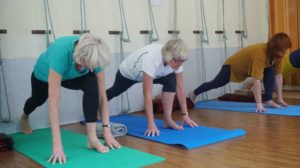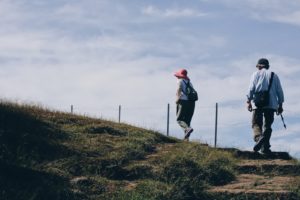
Exercise should be a lifestyle activity for adults of all ages, but especially for older adults. Regular physical activity can improve quality of life, make daily activities easier, and help with life insurance costs and coverage. Most older adults have one or more life insurance policies.
Life insurance policies can be sold for a portion of the face value. When it comes to parts of life insurance policies explained, a life insurance settlement may give an older adult the cash flow they need. This can be used for medical or health expenses or to cover costs for any unexpected expenses.
Exercise can improve health and wellness for all adults if done regularly. According to the 2018 Physical Activity Guidelines, seniors should get 150 minutes of moderate-intensity aerobic activity weekly and at least two sessions of strength training weekly.
Flexibility and balance activities should be done as often as possible. If older adults cannot meet the guidelines, they should be getting some amount of physical activity. Any amount of exercise is good, but adults will get the most benefits from meeting the recommended guidelines.
Benefits of Exercise
Regular exercise and physical activity have many health benefits for seniors. Exercise can lower the risk for many chronic conditions, such as diabetes, heart disease, stroke, and some types of cancer. Exercise can lower blood pressure and lower blood cholesterol levels.
Seniors can enjoy the benefits of increased muscle strength, improved bone mass, and the ability to move through daily activities with ease. Exercise is thought to help improve cognitive health and may lower the risk for cognitive impairment.
Exercise is one way to help prevent falls and other accidents. Exercise and physical activity also help manage weight, enhance energy levels, improve sleep, reduce stress, and reduce feelings of depression and anxiety.
Aerobic Exercises
Aerobic activities help improve your heart, lungs, and blood vessels. These are activities that will make your heart rate and breathing rate increase. You may also start to feel warmer or start to sweat.
Walking is one of the best and most convenient aerobic activities that older adults can participate in. You do not need any equipment to walk, and it can be done indoors on a treadmill or outdoors in any safe location. You only need comfortable clothes and shoes.
Running or jogging is also a great aerobic activity. It does require a little more conditioning, but many seniors run or jog on a regular basis. Running, jogging, and walking are weight-bearing exercises, so they help improve the strength of muscles and bones too.
Cycling is a great aerobic activity that takes the weight off joints. For those who have joint pain or hip/knee problems, cycling can be a nice change of pace to take the weight off those joints.
Swimming is a non-weight bearing activity because you are buoyant in the water. Swimming works many muscles in the entire body and helps improve the cardiovascular system.
Any combination of these aerobic activities is great for older adults to keep their hearts, lungs, and blood vessels healthy. Having a healthy heart can help a senior avoid completely or even survive a heart attack. They are also helpful to strengthen muscles, and some even strengthen bones.

Lower Body Exercises
Lower body exercises can help strengthen muscles and bones. They can make daily activities easier, like walking, climbing steps, outdoor activities, getting up off the toilet, or getting in and out of the car.
Ankle weights can be used for a few of these exercises, but they are not necessary. Squats and lunges can be done without any weight because they rely on body weight as resistance.
Squats are excellent for strengthening many large lower body muscles. Beginners can start with a chair stand squat by just standing up and sitting down slowly from a chair.
Lunges also work a lot of the large lower body muscles and can be done standing next to a chair for something to hold on to for better balance.
Knee extensions can be done from a seated position in a chair. Side hip raises can be done standing behind a chair with a light touch to hold on to the chair. Ankle weights can help increase the intensity of these two exercises.
Toe raises work the calf muscles of the lower leg. They strengthen ankles and feet, which can improve balance. For lower body exercises, seniors can start with one set of 10 repetitions and work up to two sets of 10 repetitions.
Upper Body Exercises
Upper body exercises strengthen arms, shoulders, and back muscles. These exercises make it easier to hold grandchildren, carry groceries, reach for something off a high shelf, change lightbulbs, or complete outdoor activities.
A few sets of dumbbells or hand weights are helpful for these exercises. However, if you do not have weights, you can use water bottles or cans instead. A weight bench can also be useful, providing support and stability for various exercises and helping maintain proper upper body strength.
Push-ups are one of the best upper body exercises, but it can be difficult for older adults to get up and down off the floor. Wall push-ups are an alternative and are done by doing a push-up against any wall.
Biceps curls work the arms. The shoulder press is great for the shoulders and arms. Rows are excellent for the back. Older adults can also start with one set of 10 repetitions and then work up to two sets of 10 repetitions for these exercises.
Core Exercises
Many core exercises require seniors to get up and down off the floor, which can be challenging. A few exercises can be done from a seated position in a chair, but these exercises limit the range of motion and can be more difficult to complete with correct form.
Sit-ups and crunches are great basic core exercises while on the floor. Trunk rotations are great for the muscles on the side of the core. One or two sets of at least 10 repetitions are effective for these exercises.
Planks are a great core stability exercise. Planks may seem difficult at first, so it helps to ease into this exercise and make sure your body is in a straight line from your shoulders to your feet. Start with holding the plank position as long as possible and working up from there.
Trunk rotations can also be done from a seated position instead of on the floor. Pulling your belly button in toward your spine and holding for 10 seconds is a great way to work the deep core muscles.
Flexibility Exercises
Flexibility exercises can help older adults move better and do the activities of daily living easier. Stretching can also help ease back pain, which affects many older adults. Activities like Pilates, yoga, and tai chi can help older adults improve their flexibility and joint ranges of motion.
Simple stretching exercises can be done after aerobic or strengthening exercises. Stretches should be held for 10 to 30 seconds each for best results. Stretching can be done multiple times a day or anytime there is an opportunity to do a quick stretch break.
Balance Exercises
Balance exercises are vital for older adults. It is common for seniors to suffer a fall, which can have long-lasting impacts including fractures, broken bones, hospitalization, or permanent disability.
Balance exercises can be done for just a few minutes daily. Balancing on one foot at a time while brushing teeth or cooking at the stove is easy. Adults can also practice balancing on each foot with eyes closed and arms at sides for 30 seconds. Balancing on one foot while doing an exercise like biceps curls can be easy and effective.
Listen to Your Body
Exercise is essential for all seniors. As with any physical activity, older adults should make sure to discuss this with their health care provider before beginning a new exercise program. You need to listen to your body and stop when necessary. Rest days are important, as is proper hydration and nutrition to hydrate and fuel your body.
Melissa Morris writes for the life insurance comparison site, LifeInsuranceTypes.com. She has a master of science in exercise science, is an ACSM certified exercise physiologist, and an ISSN certified sports nutritionist.